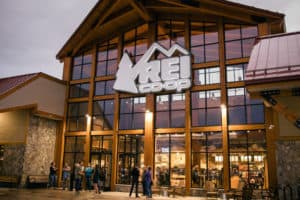You’ve poured hours into job searching, and now you’re staring at the work experience section of your resume, wondering how to make those years of hard work sound as impressive on paper as they felt in person. It’s that crucial part of your resume where you have the power to stand out but somehow, everything you type just seems…flat. In this blog post, you’ll unlock the secrets to transforming your work experience section from a list of job duties to a compelling narrative of your professional journey.
Quick Takeaways:
- Tailor each job description to highlight relevant achievements, using strong action verbs and quantifiable outcomes.
- Address employment gaps positively, emphasizing any skills or experiences gained during those periods.
- Customize your resume for each application, reflecting the job description’s keywords and prioritizing related experiences.
What Should I Include in My Work Experience Section?
When it comes to your resume’s work experience section, the key is to be as concise as possible while still providing enough detail to show prospective employers what you’re capable of. Start by listing your job title, the company name, and the dates you worked there. But here’s where it gets crucial: for each position, you’ll also want to include a bulleted list of your responsibilities and achievements.
Your focus should be on relevance and impact. Consider the job you’re applying for and tailor your work experience to highlight the skills and experiences that align best with the job description. Here’s a quick rundown:
- Relevance: If you’re eyeing a marketing position, prioritize experiences that showcase your marketing prowess—campaigns you’ve run, analytics you’ve managed, or content you’ve created.
- Impact: Whenever possible, quantify your achievements. For example, instead of saying you “increased sales,” say you “increased sales by 20% in Q4 2022.”
Action Verbs lead the way: Start each bullet point with a strong action verb. “Managed,” “Created,” and “Implemented” are more compelling than phrases like “was responsible for.”
How Do I Make My Job Descriptions Stand Out?
Crafting stand-out job descriptions involves showcasing your contributions in a way that captures attention and demonstrates value. The secret sauce? Achievements and quantification. Here’s how to sprinkle some of that sauce on your resume:
-
Highlight Achievements Over Tasks : Think about the difference you made in your role, not just the duties you performed. Did you streamline a process that saved the company time and money? That’s gold—list it.
-
Quantify, Quantify, Quantify : Numbers pop on a page. Increased customer satisfaction? Mention the survey scores or percentages. Managed a budget? State how much. Quantifying gives context and gravity to your accomplishments.
-
Be Specific : Vagueness is the enemy. Tailor your descriptions to include specific outcomes and technologies you used. This not only shows what you’ve achieved but also your technical prowess.
-
Unique Insight : Here’s something you might not find everywhere: Optimize your job descriptions for ATS (Applicant Tracking Systems) by incorporating keywords from the job posting. However, don’t just stuff them in—integrate them naturally into the achievements and duties you’re highlighting.
Can I Include Volunteer Work or Internships?
Absolutely, and here’s why: Volunteer positions and internships provide experiential learning opportunities and practical work experience, qualities that employers look for, especially if you’re early in your career or looking to switch industries. The trick is to integrate these experiences seamlessly with your professional work history. Here’s how:
-
Value Match : Present your volunteer work or internships just as you would any job, focusing on how these experiences have prepared you for the workforce. Discuss responsibilities, skills honed, and any commendations received.
-
Relevance Counts : If your volunteer work or internship is directly relevant to the job you’re seeking, put it in the work experience section. Otherwise, consider a separate section titled “Volunteer Experience” or “Internship Experience” to maintain clarity.
-
Quantify Achievements : Just like your paid roles, quantify your impact in volunteer roles or internships. Whether it was raising a certain amount of funds or increasing event attendance, those numbers speak volumes.
In wrapping up these sections of your work experience, remember: the aim is to paint a picture of a candidate who not only fits the role perfectly but brings a wealth of experience and a track record of tangible achievements. Whether through paid positions, internships, or volunteer work, your resume should demonstrate your capability, impact, and the unique value you offer to potential employers. Keep it relevant, factual, and always tailored to the role at hand. That’s your ticket to catching an employer’s eye and ultimately, securing that interview.
What if I Have Gaps in My Employment?
First things first, don’t panic! Employment gaps aren’t the red flags they once were. Today, many employers recognize that a patchy work history often reflects real-world experience, resilience, and the kind of life skills you can’t get in a cubicle. Here’s how you can turn those gaps into gold.
-
Be Honest, but Brief : If a potential employer asks about a gap, explain it honestly but without going into unnecessary detail. A simple “I took some time off for family reasons” or “I was upgrading my skills through a course” suffices.
-
Focus on Growth and Skills : Did you do anything during your gap that could be of interest to an employer? Perhaps you did freelance work, took part in professional development, learned a new language, or volunteered. These are all gold mines for showcasing your initiative, your willingness to learn, and your ability to manage your own time effectively.
-
Frame It Positively : Instead of saying “I couldn’t find a job,” say “I took the opportunity to refocus my career goals and develop new skills.” This shows prospective employers that you are proactive and resilient.
-
Customize Your Resume : If your gaps are frequent or long, consider using a functional resume format instead of a chronological one. This way, you can focus on your skills and achievements rather than the timeline.
-
Be Prepared to Talk About It : During an interview, you might be asked about your employment gap. Prepare a concise, positive explanation that demonstrates how the gap has made you a better candidate.
Remember, most employers aren’t just looking for a perfect employment timeline. They’re looking for real people, with real experiences that have shaped them into reliable, competent workers.
How Do I Tailor My Work Experience for Different Jobs?
When applying for various positions, it’s crucial to remember that one size does not fit all regarding your resume. Tailoring your work experience for different jobs can drastically increase your chances of landing an interview. Here’s how you can customize like a pro:
-
Analyze the Job Description : Before you start, really dig into the job posting. What skills and experiences are highlighted as crucial? Make a list of these points, and make sure they’re reflected in your resume.
-
Prioritize Relevant Experience : Say you’re applying for a marketing position, but your previous job was in sales. Emphasize any crossover duties and skills, such as client outreach or analytics. If certain past responsibilities don’t relate to the job at hand, feel free to minimize or even omit them.
-
Use the Right Keywords : Many companies use applicant tracking systems (ATS) to screen resumes before a human eye ever sees them. Using the same language as the job posting can help your resume get flagged as a good match. So, if the job ad mentions “project management” and you’ve got experience in that area, make sure you use those exact words.
-
Show, Don’t Tell : Rather than simply listing duties, highlight your achievements with specific examples. For instance, “Increased sales by 20% by implementing a new customer feedback system” is far more compelling than “responsible for handling customer feedback.”
-
Quantify Your Achievements : Wherever possible, back up your accomplishments with numbers. Did you lead a team? Mention how many people were in it. Did you boost efficiency? By what percentage? Numbers provide clear evidence of your impact.
-
Keep it Streamlined : Don’t overwhelm the hiring manager with unnecessary detail. Remember, the goal is to make it as easy as possible for them to see why you’re the perfect fit for the job.
-
Unique Tip : Create a separate “Key Achievements” section for each role you list in your work experience. This unique structure allows quick scanning and immediately draws the eye to your accomplishments – something many applicants fail to do, yet it’s highly effective and appreciated by time-strapped hiring managers.
Remember, your resume is your first (and sometimes only) chance to make a good impression. By carefully tailoring your work experience, you can show potential employers not just that you want the job, but that you’re truly the best person for it.





